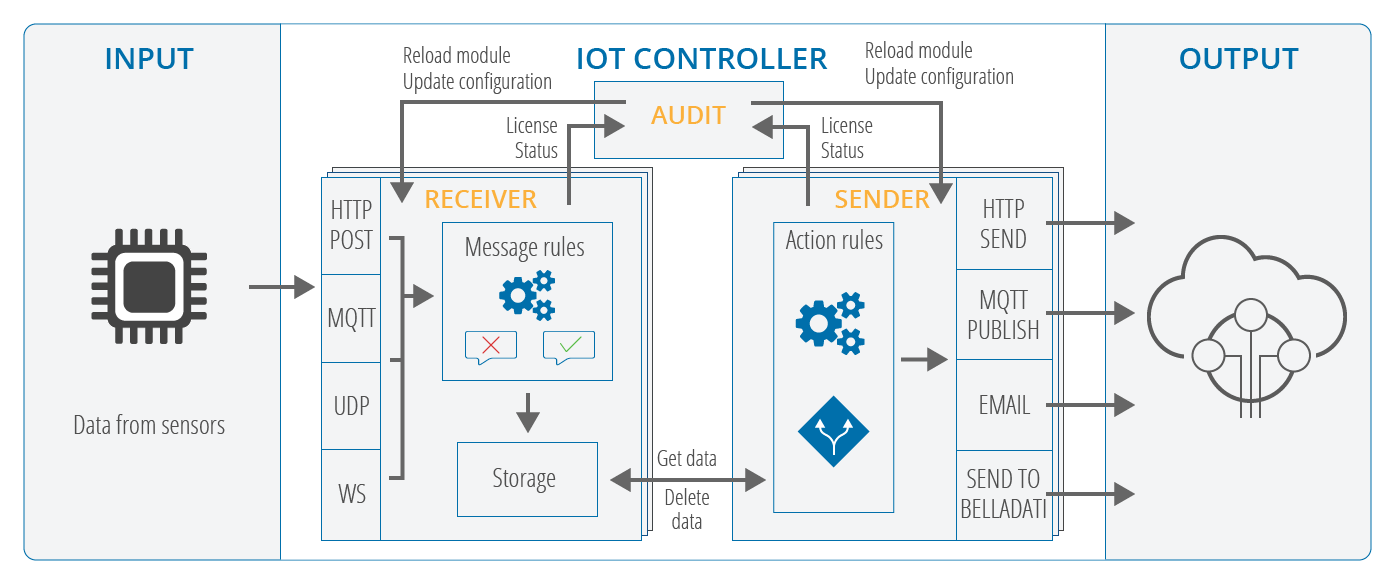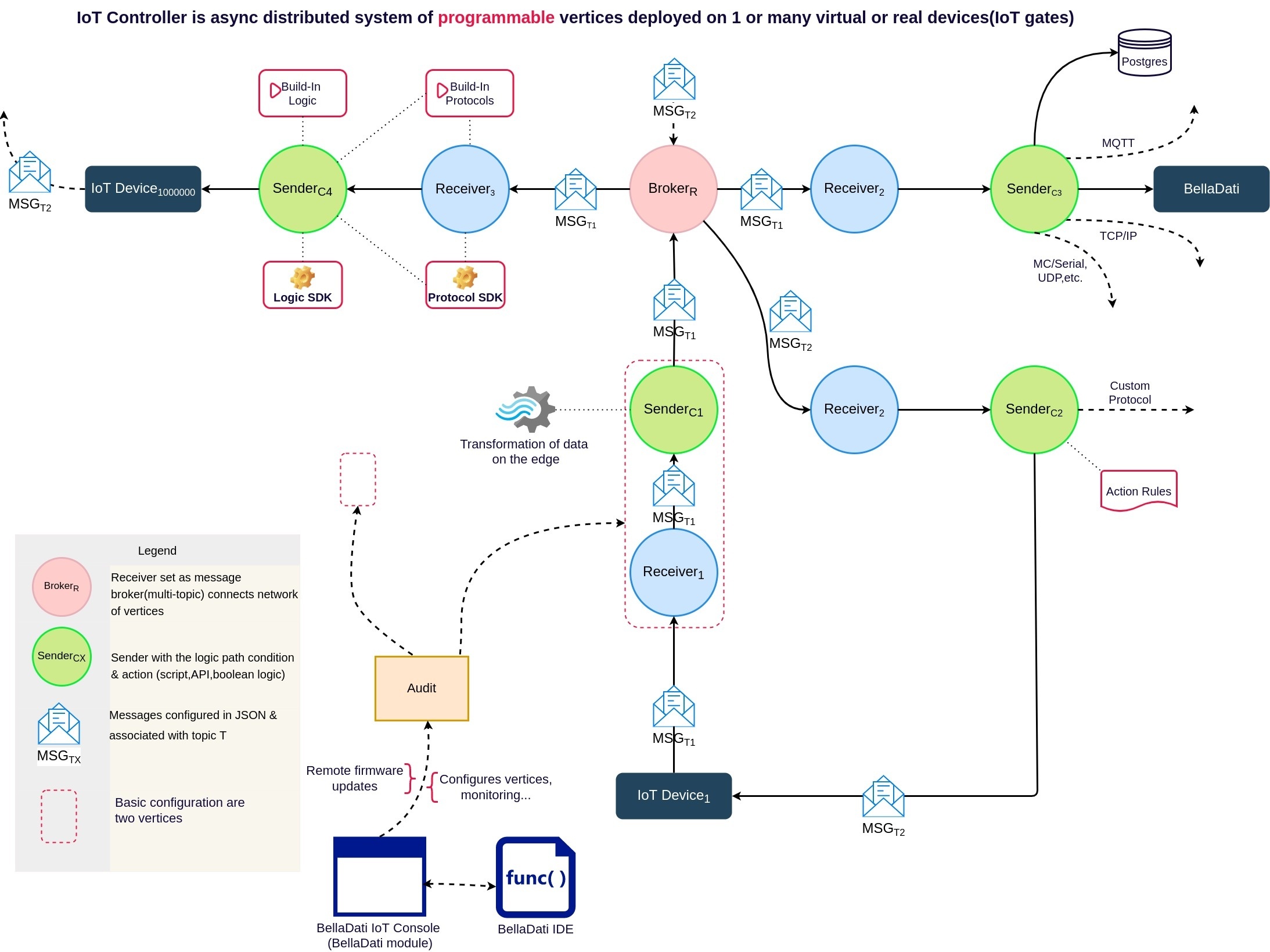
| BellaDati IoT Data Controller is distributed microservices based application implemented in Java utilizing proven frameworks Hazelcast and Vert.x. |
Provides licensing and management services to other modules
Receives data from IoT devices, eventually subscribes the data published by external services. It provides authentication and message verification mechanism to ensure the data security and integrity. There are several modes, in which the Receiver can operate:
Modbus PLC - module implementing PLC4X framework to support Modbus communication protocol
Sender is used to read data from receiver and conditionally execute automated actions, for example:
BellaDati REST - Send data to the BellaDati backend over REST API, single or bulk mode for huge data loads
HTTP based - Send data to 3rd party systems using HTTP protocol with wide range of authentication options support
SMTP - Use SMTP action to execute send email actions
Filesystem - store data to filesystems
MQTT publish - Publish MQTT messages to the MQTT broker

Each IoT Data Controller module provides set of HTTP endpoints, which can be used to manage module's configuration, read status or received data.
|
|
IoT Controller enables architects to build network of vertices, apply conditions, protocols and build custom logic, that controlls IoT devices. Diagram below is explaining the concept of building such product logic in greater detail.
